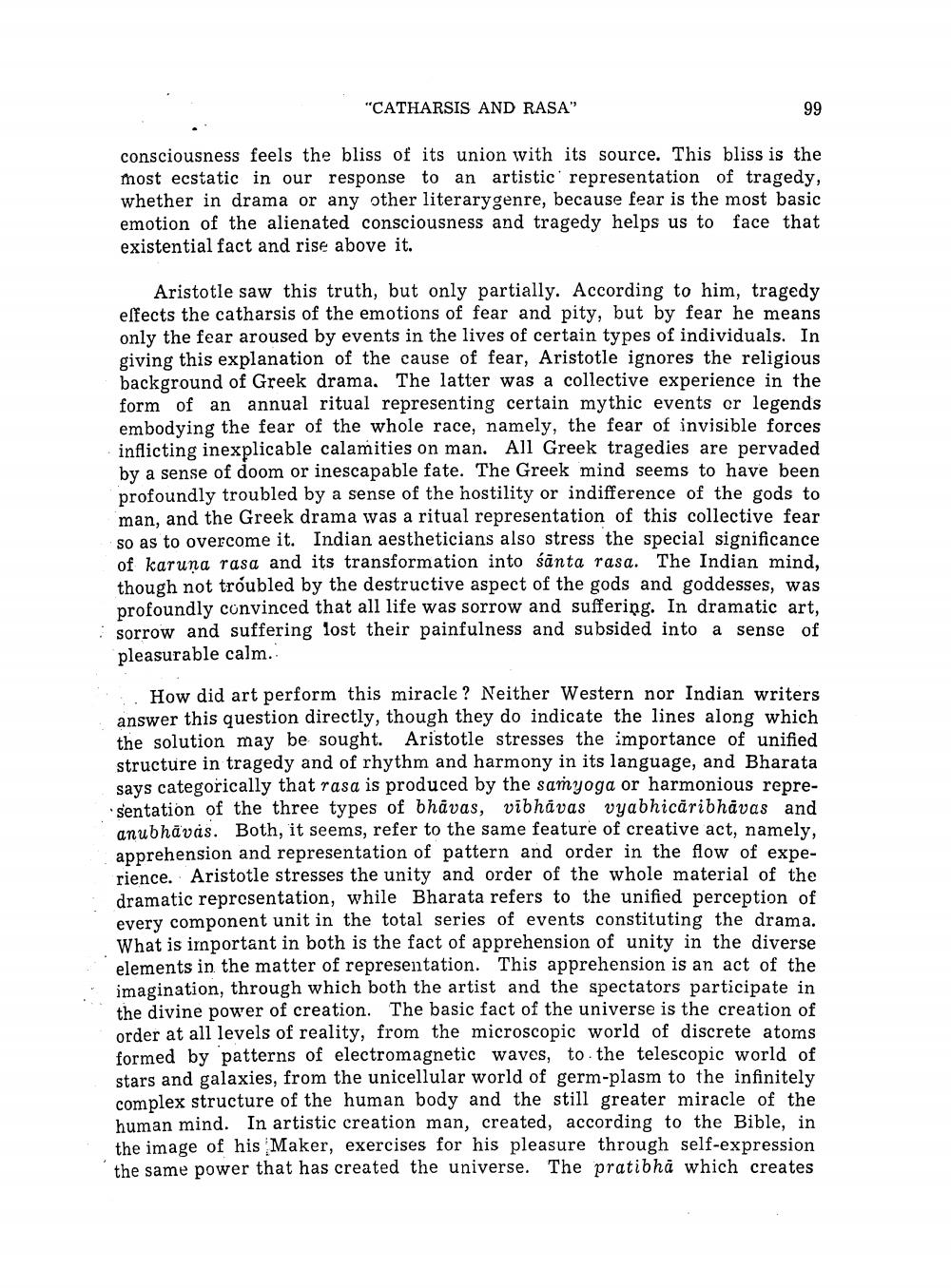________________
"CATHARSIS AND RASA"
99
consciousness feels the bliss of its union with its source. This bliss is the most ecstatic in our response to an artistic' representation of tragedy, whether in drama or any other literary genre, because fear is the most basic emotion of the alienated consciousness and tragedy helps us to face that existential fact and rise above it.
Aristotle saw this truth, but only partially. According to him, tragedy effects the catharsis of the emotions of fear and pity, but by fear he means only the fear aroused by events in the lives of certain types of individuals. In giving this explanation of the cause of fear, Aristotle ignores the religious background of Greek drama. The latter was a collective experience in the form of an annual ritual representing certain mythic events or legends embodying the fear of the whole race, namely, the fear of invisible forces inflicting inexplicable calamities on man. All Greek tragedies are pervaded by a sense of doom or inescapable fate. The Greek mind seems to have been profoundly troubled by a sense of the hostility or indifference of the gods to man, and the Greek drama was a ritual representation of this collective fear so as to overcome it. Indian aestheticians also stress the special significance of karuna rasa and its transformation into śānta rasa. The Indian mind, though not troubled by the destructive aspect of the gods and goddesses, was profoundly convinced that all life was sorrow and suffering. In dramatic art, sorrow and suffering lost their painfulness and subsided into a sense of pleasurable calm.
at masa is produceras, vibhāvas oy creative act,
How did art perform this miracle? Neither Western nor Indian writers answer this question directly, though they do indicate the lines along which the solution may be sought. Aristotle stresses the importance of unified structure in tragedy and of rhythm and harmony in its language, and Bharata says categorically that rasa is produced by the samyoga or harmonious repre·sentation of the three types of bhāvas, vibhāvas vyabhicāribhāvas and anubhāvas. Both, it seems, refer to the same feature of creative act, namely, apprehension and representation of pattern and order in the flow of experience. Aristotle stresses the unity and order of the whole material of the dramatic representation, while Bharata refers to the unified perception of every component unit in the total series of events constituting the drama. What is important in both is the fact of apprehension of unity in the diverse elements in the matter of representation. This apprehension is an act of the imagination, through which both the artist and the spectators participate in the divine power of creation. The basic fact of the universe is the creation of order at all levels of reality, from the microscopic world of discrete atoms formed by patterns of electromagnetic waves, to the telescopic world of stars and galaxies, from the unicellular world of germ-plasm to the infinitely complex structure of the human body and the still greater miracle of the human mind. In artistic creation man, created, according to the Bible, in the image of his Maker, exercises for his pleasure through self-expression the same power that has created the universe. The pratibhā which creates




